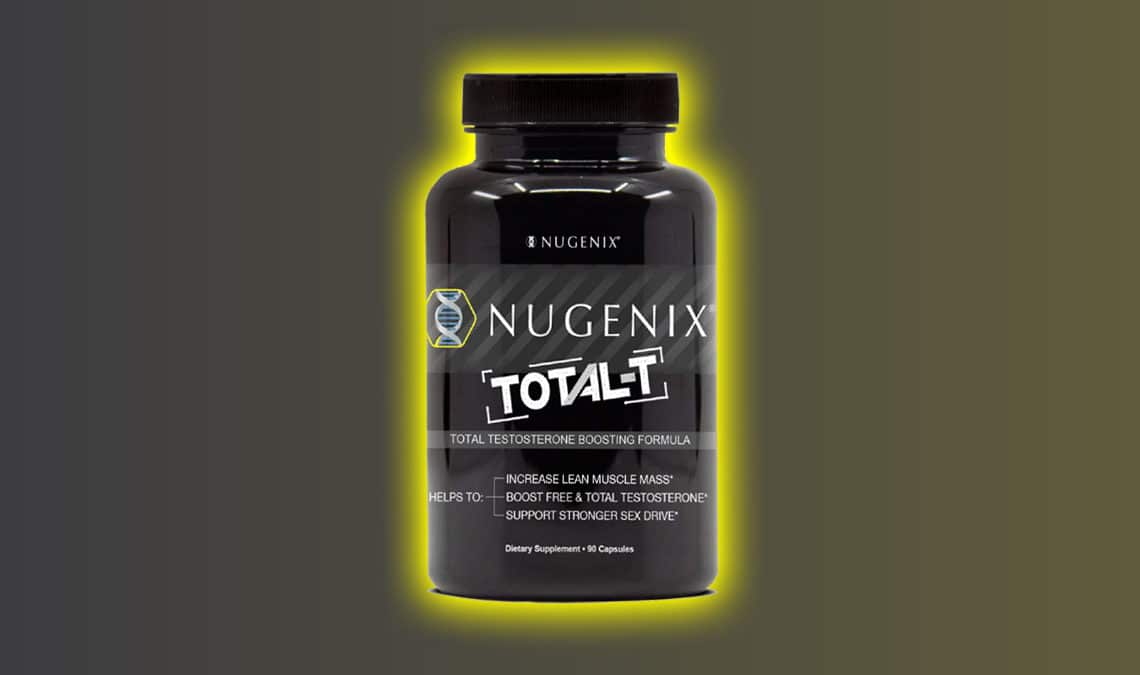
Are you a man who’s lost his mojo? Well then I have good news for you.
There’s a dietary supplement that will help you rediscover your confidence, boost your energy and restore overall wellness. It will maximize your energy, increase lean muscle mass and boost your libido.
That dietary supplement is Nugenix Total-T. At least, that’s the buzz around it. You’ve undoubtedly heard promises like this before–they’re pretty standard for male hormone support products.
But is it actually true for Nugenix? During the course of our research for this Nugenix review, we found that the main ingredients in Nugenix Total-T and Nugenix Free Testosterone Booster fell into two categories:
- The ingredient is somewhat supported by the science as beneficial, but most of them not for increasing testosterone
- There is not enough of the ingredient to have an effect on testosterone, or the dosage is unclear because it’s obscured by a proprietary blend
Nugenix actually offers a wide variety of supplements, including a multivitamin, thyroid support supplement, and various herbal extracts, but Total-T remains its core product. Its second-best-selling product appears to be Nugenix Free Testosterone Booster, so this article will cover both of them.
In this review, we’ll go over the difference between total, free and bioavailable testosterone, and take a close look at each of the ingredients in these two products–not just whether they work, but what exactly they appear to do, and how well they’re dosed.
What Is Free Testosterone?
Testosterone is a steroid sex hormone; it is the primary sex hormone in males, although women do produce much smaller quantities of it. It is produced in the gonads–the testicles and ovaries.
Testosterone plays several roles in the body, most notably in exerting anabolic effects on muscle tissue (in other words, building muscle), and in being a primary driver of libido.
Total testosterone is the amount of testosterone in your blood, not your body. However this is slightly misleading–it’s measured in terms of testosterone per unit of blood volume–usually nanograms per deciliter in the U.S., although nanomols per liter is used in some countries. That means that for a given ng/dL value, a bigger man with more blood actually has more milligrams of testosterone–though of course he needs more, since testosterone acts on muscle tissue.
For most men, total testosterone levels decrease at a rate of .4% to 1% per year, beginning around 25 to 30 years old. This often leads to issues such as loss of libido and low energy later in life. There is disagreement, however, over the extent to which this is an inevitable consequence of aging as opposed to a product of the unhealthy lifestyle of the average man.
So what is free testosterone then?
Most testosterone–and most other sex hormones including estrogens (estrogen is actually three different hormones, if you didn’t know) for that matter–are bound by something called sex hormone-binding globulin, or SHBG. SHBG is mostly produced in the liver, although the brain and testes also produce some. It binds tightly to testosterone and temporarily inactivates it.
There is another protein called albumin which also binds to sex hormones. Unlike SHBG, this is a fairly loose bond; the testosterone can break free of albumin quite easily, and thus is not entirely inactive; its activity is merely reduced.
Free testosterone is testosterone that is not currently bound by either SHBG or albumin, and thus “free” and totally active. At any given time, only about .1% to .3% of your total testosterone is normally free.
There is a separate but related metric called bioavailable testosterone, which is free testosterone plus albumin-bound testosterone. As the name suggests, this is all testosterone that is currently active to some degree. It’s also a useful test, but bioavailable testosterone is very closely correlated (.96 correlation) with free testosterone; in most cases, both your free testosterone and bioavailable testosterone numbers will “paint the same picture,” so to speak.
Now reading this, you might think that SHBG is bad, albumin is kinda meh, and free testosterone should be as high as possible. That isn’t actually the case though, for a few reasons.
Testosterone is not produced evenly throughout the day; particularly in men, the body produces a lot of it at night, and less during the day. Male testosterone levels typically peak around 8 AM, and reach a nadir around 8 PM.
This could be a problem, because testosterone has a half-life of only 45 minutes or so. Combined with uneven production, this could easily lead to dramatic variations in testosterone levels throughout the day.
SHBG solves this problem by extending the half-life of testosterone. It helps to keep your testosterone levels steady throughout the day.
SHBG also allows the body to save testosterone for when it is most needed. Insulin inhibits SHBG production, which means more of your testosterone becomes active after eating. Growth hormone and insulin-like growth factor 1, two anabolic hormones produced during exercise, also inhibit SHBG production–so more of your testosterone becomes active after working out. Since testosterone builds muscle, these are times when you would want more of it.
Excessively high or low levels of sex hormone-binding globulin are both associated with problems. High levels, since they lower free testosterone, cause similar issues to low total testosterone, which is probably what you’d expect.
Low SHBG is a risk factor for type 2 diabetes, though it’s not clear that it’s a direct cause—since insulin inhibits SHBG production, causation might run the other way. However, low SHBG is also a risk factor for cardiovascular and coronary disease mortality, even after controlling for insulin and glucose tolerance.
Testosterone itself suppresses SHBG production, so taking exogenous testosterone–either as testosterone replacement therapy or “doing steroids”–will lower SHBG.
The bottom line here is that you should want your SHBG to be somewhere within the normal range, but not as low as possible. And remember, if you raise your total testosterone, your free testosterone goes up with it.
Should You Take A Testosterone Booster?
First off, are your testosterone levels actually low?
Different organizations give different normal ranges for total testosterone, but 270 to 1,070 ng/dL is most commonly used. That’s a big range, and there’s a meaningful difference between being near the top versus the bottom of it. Young, healthy men usually have testosterone levels over 600 ng/dL, while older and less healthy men will often be under 400. As you can see from that study, higher free testosterone is also associated with youth and a healthy body mass index.
Always get your testosterone tested early in the morning, after having fasted for 10-16 hours. The normal range is predicated on the assumption that you fast; if you test later in the day or didn’t fast, you’ll get a lower number and may wrongly believe you have low testosterone.
In other words, the range is a bit misleading–it’s rare for anyone to be near the top of it, nor do you need to be. On the other hand, you can have low testosterone symptoms without actually being below range. Anecdotally, different men feel better at different testosterone levels, but it’s rare for anyone to feel at their best below about four or five hundred. Free testosterone normal range, as mentioned, should be about .1% to .3% of total testosterone–if it’s less than .1% you should try to raise free testosterone, but if it’s in that range, focus on total testosterone.
Bear in mind that supplements aren’t the only way to raise your total and free testosterone, nor even the best. Weight loss, if substantial and maintained, can permanently raise testosterone. This is because fatty tissue produces an enzyme called aromatase, which converts testosterone to estrogen, which in turn suppresses testosterone production.
Sleeping better will also raise your testosterone levels.
That said, testosterone boosters are not dangerous, and are worth a try. And since there is a reciprocal relationship between sleep, weight loss and testosterone levels, it may be worth trying to tackle all three at once.
If your total testosterone level is below 500 ng/dL, it’s probably worth trying testosterone boosting supplements. If it’s in the 500 to 600 range, you could try supplements, but would likely be fine just focusing on lifestyle change.
Does Nugenix Work?
This question effectively means, do the ingredients of Nugenix work? Let’s look over them one at a time.
Nugenix Review #1: Ingredients in Nugenix Total T
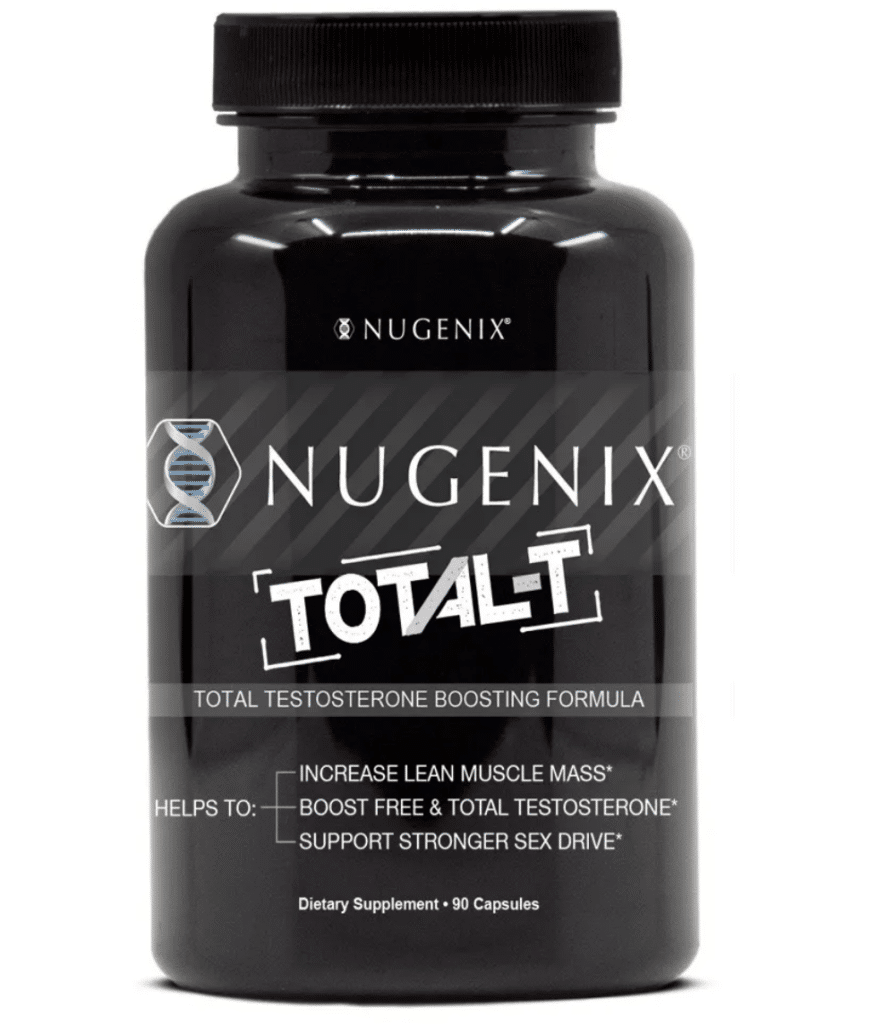
Vitamin B6, 2 mg Also known as pyridoxine, vitamin B6 has a recommended daily value of 1.3 mg in adults. B6 deficiency in rats has been shown to reduce either production of or sensitivity to testosterone– it’s not clear which.
Multiple studies have shown that megadoses of B6 can suppress prolactin, potentially improving sexual function. However, 2 mg per day won’t do this– it requires megadoses of hundreds of mg per day.
Vitamin B12, 2.4 mcg–Also called methylcobalamin, B12 has a daily value of exactly 2.4 mcg. B12 doesn’t have any proven associations with testosterone levels in humans, but it is associated with sperm quality. B12 deficiency reduces sperm motility and increases the number of deformed sperm cells. Another study suggests that b12 deficiency causes testicular pain.
One could reasonably speculate, based on these studies, that B12 plays a role in testosterone production as well. But for now, that’s all it is–speculation.
Zinc, 1 mg–Now we come to an ingredient with a strong evidentiary basis. Zinc supplementation has been shown to increase testosterone, as well as sperm count and dihydrotestosterone, a related hormone that has a bigger impact on libido than testosterone itself. It also increases free testosterone as well as thyroid hormone levels.
Other studies find that zinc increases subjective energy level and reduces depression, so it’s a great thing to supplement. However, the daily value for men is 11 mg a day. Studies usually use much higher amounts–often 200 to 250 mg of zinc sulfate, which equates to 40 to 60 mg of zinc. 1 mg of zinc just isn’t significant.
L-Citrulline Malate, 1,125 mg–An amino acid, citrulline is involved in the urea cycle, so taking it improves nitric oxide metabolism. There’s no evidence that it raises testosterone, however nitric oxide is involved in erections. Supplementing at least 1,500 mg a day can improve erections, apparently via a weaker version of the same mechanism by which Viagra works–increasing cGMP levels in the penis.
There’s only one study showing that, but other studies indirectly support this notion, by showing improvements in blood pressure, arterial stiffness, blood flow and nitric oxide levels. Most studies use even higher dosages though, often as much as 6 grams/day.
Fenugreek Extract, 600 mg–Fenugreek is an herb so there’s no daily value for it. It’s widely believed to improve testosterone and libido, but the evidence is mixed and low-quality. One study found an an increase in testosterone (both total and bioavailable), another found no impact on testosterone and a decrease in dihidrotestosterone levels, and a third found no effects on testosterone, but an increase in libido and sexual satisfaction.
Fenugreek is often touted as an aromatase inhibitor (estrogen-lowering supplement), but studies find no effect on estrogen. The 600 mg dosage used here is at least consistent with that used in studies.
It’s also worth mentioning that this is a proprietary feungreek extract, although fenugreek in general has been studied outside the context of this particular brand.
Ancient Peat Extract and Apple Fruit Extract Blend, 150 mg–This is some kind of proprietary blend, and it’s not clear how much of each of the two ingredients is in it, nor what extract ratios are used. There are two studies that purport to show this blend–this specific trademarked blend, at this exact dosage–may improve strength, power and body composition.
Both of those studies are not only industry-funded, but actually performed by the same team consisting largely of supplement company employees, although an actual professor is credited as lead author on both.
Regarding the individual ingredients, apples have a couple of potentially interesting chemicals in them, including ursolic acid and quercitin. As for ancient peat extract, it’s not clear what that even is, and doesn’t seem to be studied or even mentioned anywhere outside the context of this particular branded extract.
Eurycoma Longfolia Root Extract, 100 mg–Also known as longjack or tongkat ali, this herbal supplement has a fair amount of evidence behind it. One study found improvements in libido, erections and sperm quality, but no increase in testosterone. Other studies have found decreases in cortisol (the primary stress hormone) and increases in testosterone in stressed-out men. In men who were not subject to high levels of stress, testosterone doesn’t seem to be reliably increased.
Longjack seems to reduce estrogen in vitro, but these effects have never been demonstrated in vivo. This may be due to poor oral bioavailability. Speaking of which, studies which find benefits from oral longjack extract generally use 200 to 300 mg a day of a 100:1 extract, often spread out to two doses a day. The extract ratio in Nugenix is not specified, but is unlikely to be higher than 100:1, and may well be much lower.
Boron (as Boron Glycinate), 10 mg–Boron is a mineral with no daily value, and whether it is essential is a matter of some debate. Most studies on it have been done on women, often with an eye towards relieving PMS and menstrual cramps. The one study that looked at effects on sex hormones in men found increased free testosterone and reduced estrogen and SHBG from 10 mg of boron a day.
Nugenix Review #2: Ingredients In Nugenix Free Testosterone Booster
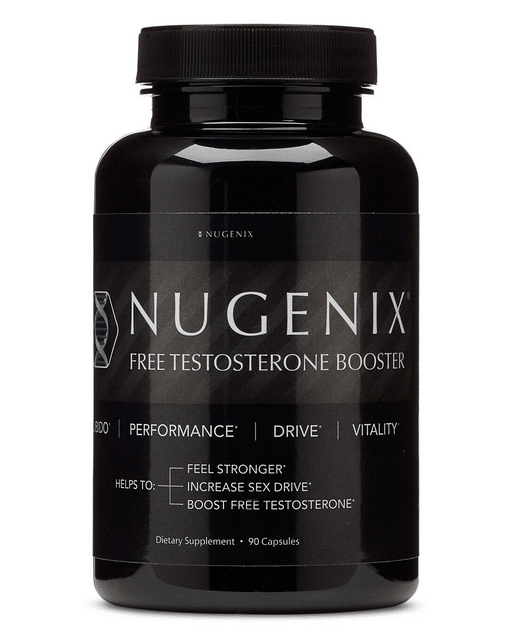
These are mostly the same as in the Total T supplement, with one exception, plus a few whose dosages are different.
Vitamin B6, 2 mg–Exactly the same as in the Total T supplement. However, the daily value stated on the label is different for some reason–it’s stated as 100% here vs 118% on the Total T label.
Vitamin B12, 50 mcg–B12 was discussed earlier, but the dosage here is 20 times higher. That isn’t dangerous, and given the prevalence of B12 malabsorption issues, it might even be helpful. Again though, this supplement has a totally different idea of what the daily value is–it’s stated as 100% on the other label and 833% here, despite being over 20 times as much, and the same form of B12.
Zinc, 1 mg–Identical to the Total T supplement.
The final three ingredients are part of a proprietary blend, which means you can’t tell how much of each is in the supplement.
L-Citruline Malate–As the first listed ingredient of the proprietary blend, it must be dosed at at least 701 mg. Probably more, who knows. Still less than the 5 to 6 grams optimal dose.
Fenugreek Extract–There’s no telling the dosage, but it’s probably a few hundred milligrams.
Tribulus Terrestris Extract–This herb is commonly sold as a testosterone booster, but the evidence for that is weak. It may slightly raise testosterone in infertile men, but doesn’t seem to help in healthy young men. Libido, erections and testosterone may be improved in older men with low testosterone.
Studies usually use 750 mg a day or more of tribulus terrestris extract–or put another way, 300 to 400 of saponins, the active ingredient–divided into three daily doses. Unfortunately Nugenix Free Testosterone Booster doesn’t mention the extract ratio, and the exact amount is obscured by a proprietary blend, but must be under 700 mg of extract.
Nugenix Side Effects
Nugenix claims that it’s products have no known side effects. Several ingredients, including citruline malate, fenugreek and tribulus terrestris can sometimes cause gastrointestinal upset. The FAQ mentions that this used to occur with an older version of the product, but then they changed the ratio of citruline to malate, reducing the malate content.
In general, if these products have their desired effects, you might expect a slight increase in body temperature and heart rate, and perhaps a slight darkening or reddening of the skin.
Google searches however reveal no reports of side effects from users discussing Nugenix Total T and Free Testosterone Booster. If there are side effects, they’re either uncommon or too mild for people to bother commenting on; probably both.
Is Nugenix Any Good?
At this point we should mention the Nugenix price: both Nugenix Total T and Nugenix Free Testosterone Booster cost $69.99 for a 90-capsule, 30-day supply. Other Nugenix products cost more or less, with the most expensive costing $169.99 for a 30-day supply. No, that is not a typo.
The ingredients in Nugenix products are mostly somewhat supported by science, though often for purposes other than raising total or free testosterone. Many ingredients are also either underdosed, or the dosage is unclear due to the extract ratio being unstated and/or the use of a proprietary blend.
The biggest offender in terms of being underdosed is the citruline. A good dose of citruline is around 5 to 6 grams a day. As we touched upon in our article on reishi and chaga mushrooms, supplements that have to be dosed in multi-gram ranges can’t be effectively packed into capsules; you really need to take them as powders.
Nugenix also provides no information on its manufacturing process, and no certificates of analysis from independent labs to verify the contents of its products.
Nugenix probably won’t hurt you. If you have the money to spend, you could try it out. But if it works, do you want to spend that much every month?
Frankly, you’d be better off buying the individual components of Nugenix (other than that apple and peat extract) and building your own supplement stack. This approach is a little more work, but it’s cheaper and you can be sure you won’t be under-dosing anything.
Our Recommended Nugenix Alternatives: Try This DIY Test Boost Stack
If you want to build your own Nugenix-like supplement stack–one that’s more effective and cheaper–here’s what you should buy. This stack is designed to not only raise total and free testosterone, but also lower estrogen and improve libido, erections and energy level.
It includes most of the ingredients in Nugenix. It leaves out the ancient peat and apple extract, which is probably total bunk, and it also leaves out fenugreek and tribulus, which currently don’t have enough research support to recommend them.
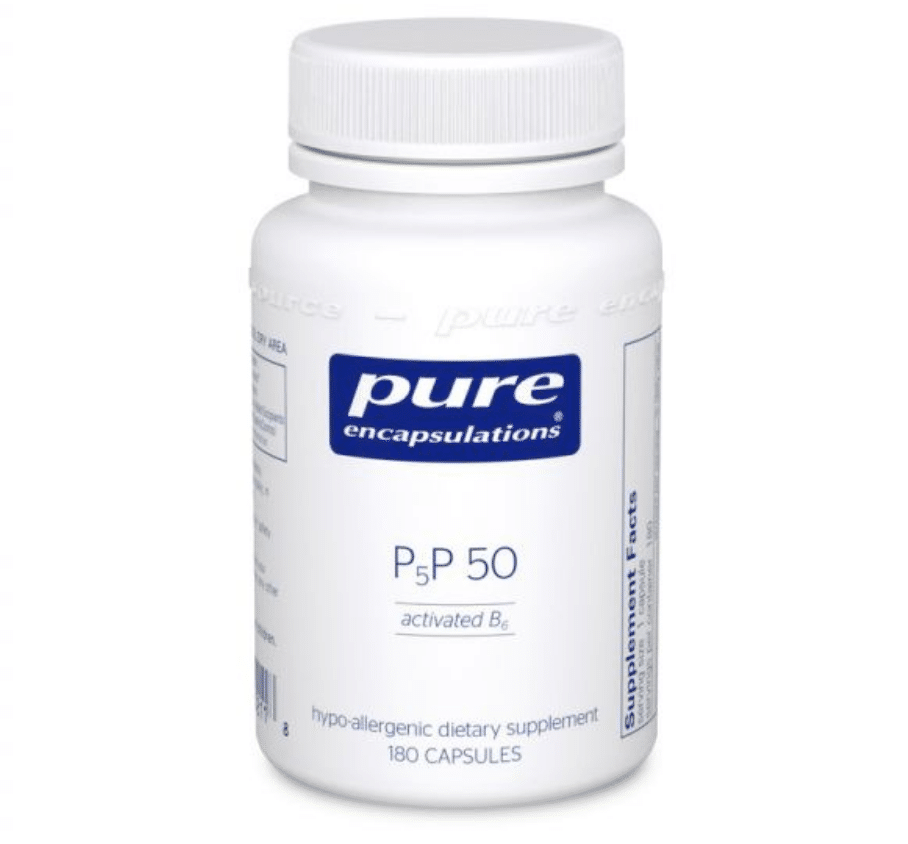
Vitamin B6
Pure Encapsulations P5P Activated Vitamin B6
Pyroxidine-5-phosphate is the active form of vitamin B6. Although studies usually use 300 mg a day of B6 to lower prolactin levels, you should be able to achieve similar results with 100-200 mg a day of P5P. Take one capsule a day in the morning, and if libido remains low, experiment with taking a second capsule in the evening.
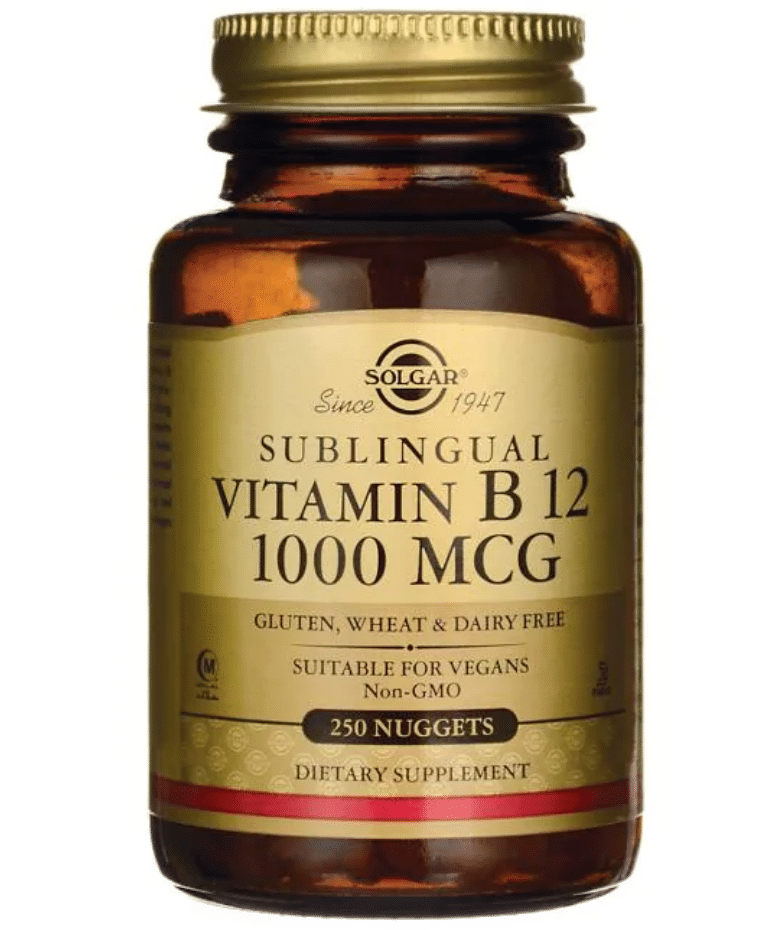
Vitamin B12
Solgar Sublingual B12, 1000 mcg, 250 Nuggets
Solgar is another reputable and well-reviewed brand, and this product is no exception. The sublingual route bypasses any malabsorption issues you may have, which is ideal when it comes to b12. 1000 mcg is a very high dose, but according to the Mayo Clinic, B12 overdose isn’t a concern, as your body just won’t absorb more than it needs. At worst it might cause a headache, in which case perhaps you’ll want to stop taking it, but it won’t be dangerous.
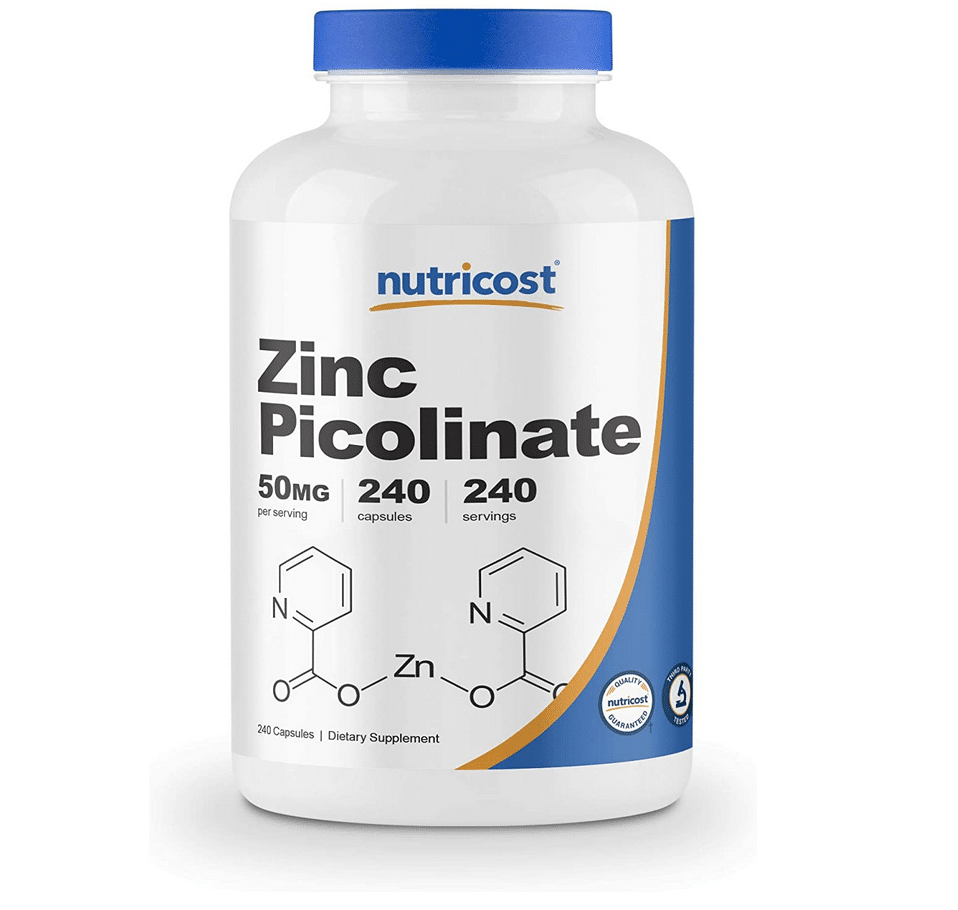
Zinc
Nutricost Zinc Picolinate, 50 mg, 240 Capsules
Yet another reputable brand, Nutricost is reliable and follows GMP-standard manufacturing practices. This supplement provides 50 mg of zinc per serving, which is in line with what’s used in studies. Zinc is best taken with dinner.
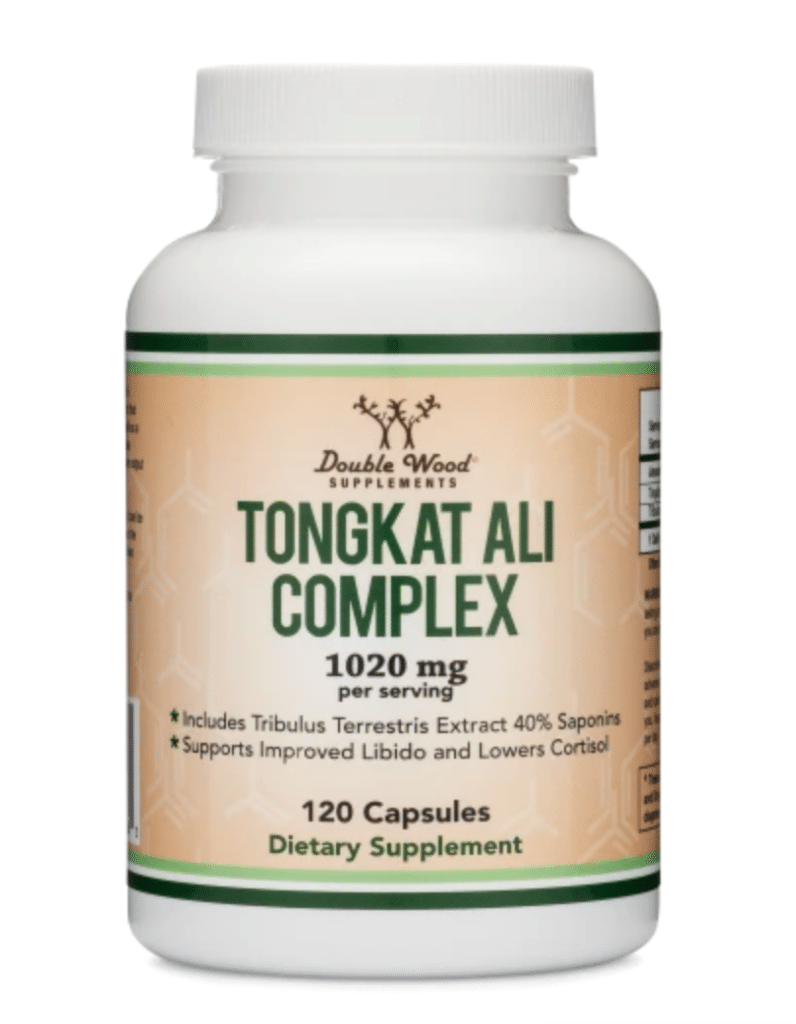
Eurycoma Longfolia, aka Tongkat Ali
Doublewood Tongkat Ali, 1020 mg, 120 Capsules
A little bit of explanation is warranted here. This supplement is two capsules per serving, so each capsule is 500 mg. And it’s a 200:1 extract, so even one capsule a day gives you about the same amount of the active ingredient as the 200-300 mg of a 100:1 extract used in most studies. Two capsules a day is effectively a double dose. If longjack works for you at all, you’ll know when you try this supplement.
For best results, split your dosage into one capsule in the morning and one in the evening. Remember that since eurycoma longfolia mainly works by lowering cortisol, this is only likely to be helpful for men with high stress levels.
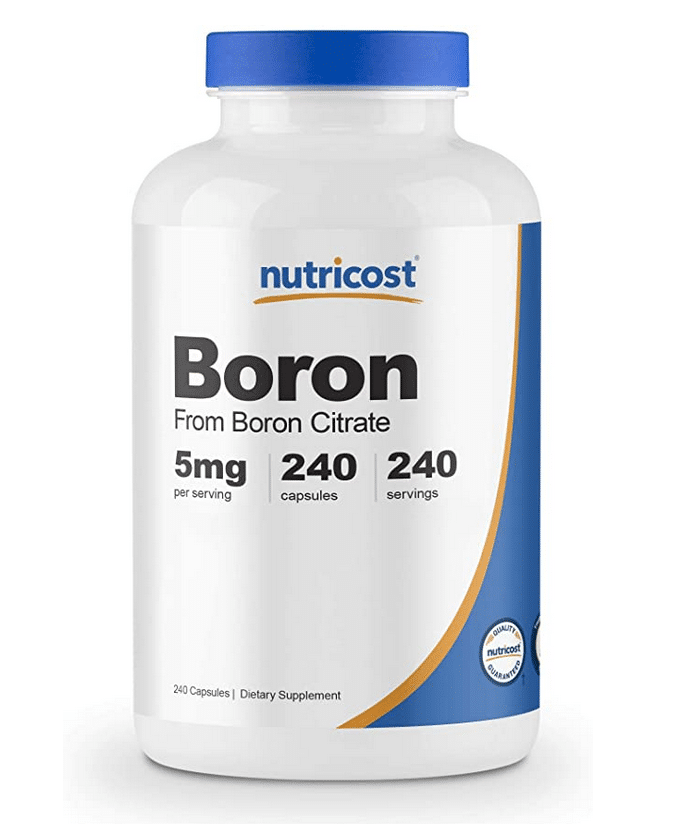
Boron
Nutricost Boron, 5 mg, 240 Capsules
Studies show that 10 mg of boron a day lowers estrogen and SHBG and raises free testosterone. Since this is 5 mg, you’d want to take two capsules a day, probably divided into morning and evening doses. However, if your estrogen and SHBG aren’t particularly high to begin with, you may only need one capsule a day.
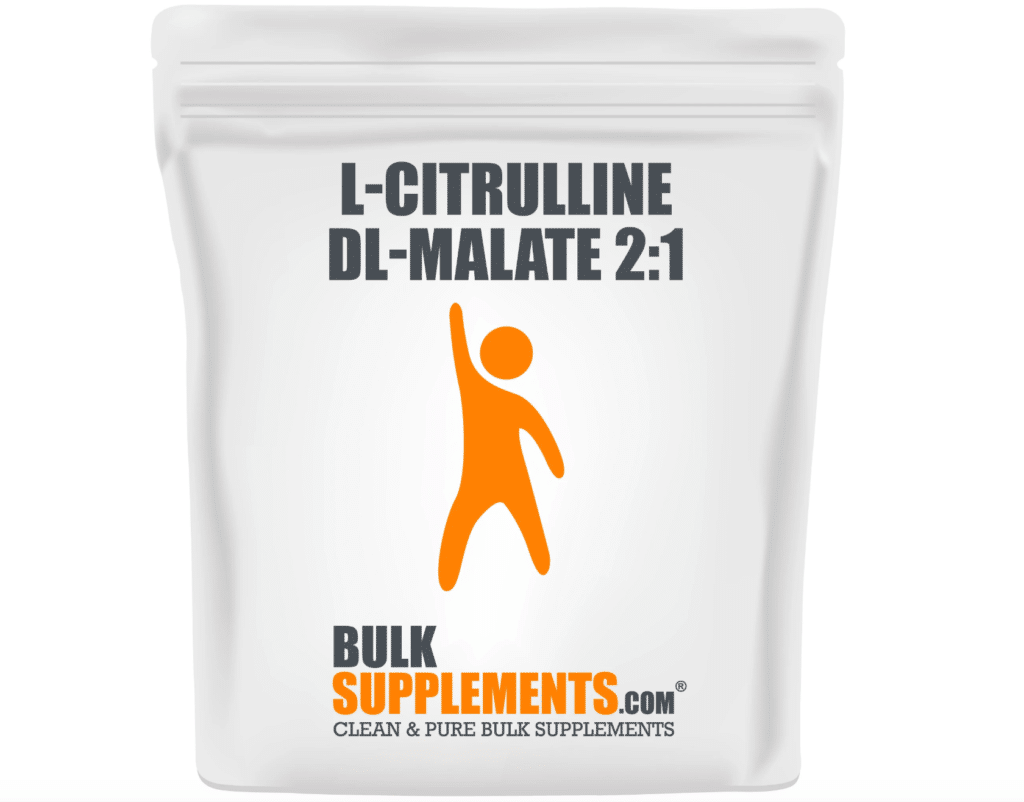
L-Citruline
Bulk Supplements L-Citrulline DL-Malate 2:1
Bulk supplements is the best source for powdered amino acid supplements; in terms of reliability and affordability, it’s just hard to beat. This product uses the same 2:1 ratio as Nugenix, but it’s actually dosed high enough.
One serving is 3 grams, and you’ll want to take two servings a day. You should divide that into morning and evening doses, and take it on a full stomach, to minimize the possibility of gastrointestinal discomfort.
Editor’s note: we are regularly updating this review. If you see any problems, weird interpretations of the data, or just want to say hi, please reach out to hello@the-unwinder.com.